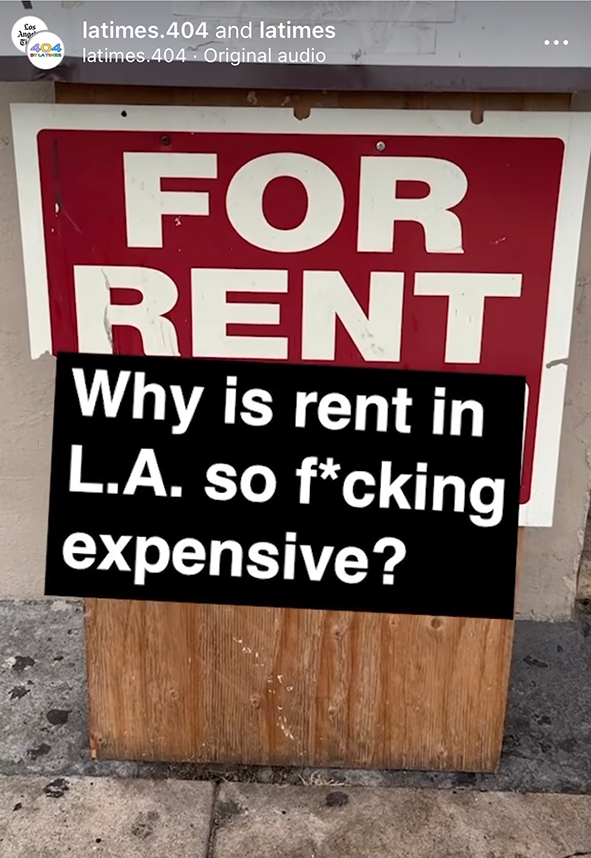The HomeWork: July 12, 2023

Welcome to the July 12, 2023 Main edition of The Homework, the official newsletter of California YIMBY — legislative updates, news clips, housing research and analysis, and the latest writings from the California YIMBY team.
News From Sacramento
On June 30th, Assemblymember Robert Rivas (Salinas) was sworn in as the 71st Speaker of the California State Assembly. Speaker Rivas has been a powerful champion for Californians in need of affordable housing, and we look forward to our ongoing collaboration on bold housing solutions. To read our press release, click here.
Since his inauguration, Speaker Rivas has appointed the following members of the Assembly to leadership posts:
-
Speaker pro Tempore: Assemblymember Cecilia Aguiar-Curry
-
Majority Leader: Assemblymember Issac Bryan
-
Democratic Caucus Chair: Assemblymember Rick Chavez Zbur
-
Majority Whip: Assemblymember Lori Wilson
-
Chair of Assembly Elections Committee: Assemblymember Gail Pellerin
-
Chair of Assembly Governmental Organizations Committee: Assemblymember Avelino Valencia
-
Chair of Assembly Local Government Committee: Assemblymember Juan Carrillo
Meanwhile, on the legislative agenda, we are approaching the final policy committee hearings before the Legislature heads to Summer recess. Here are the latest updates on our sponsor and high-priority bills:
- SB 423 (Wiener) passed the Assembly Natural Resources Committee on 7/10 with a 7- 4 vote. It now awaits further action in the Assembly.
- AB 1633 (Ting) is also heading to its last policy committee and will be heard on July 12th in the Senate Environmental Quality Committee.
- AB 976 (Ting) recently passed the Senate Governance and Finance Committee and is heading to the Senate Floor.
- SB 684 (Caballero) is heading toward its last policy committee and is scheduled to be heard on July 12th in the Assembly Local Government Committee.
- SB 450 (Atkins) is currently in the Assembly Appropriation Committee and will not be heard until after the Legislative summer recess.
To stay current on what housing bills California YIMBY is sponsoring, supporting, and watching, you can now use our Abstract link to track with us.
We will have more housing legislation news in the coming weeks as bills are refined, amended, and scheduled for committee hearings. To stay up to date on committee action, and to receive alerts for bills and other legislative activities, join our Rapid Response team.
Housing Research & Analysis
The Keys to the Low-Carbon City: Pro-Housing Land Use Reform
Cities often overlook land use reforms as tools to reduce climate pollution, but such reforms are among the most highly-leveraged (and under-utilized) tools at the disposal of urban leaders.
A new report from Holland, Subin, Kay et al at the Rocky Mountain Institute (RMI) explores how land use reforms can be used to reduce climate pollution. To reach its 2030 climate action goals, the United States needs to reduce carbon pollution from transportation by 45 percent – a target that requires both a substantial increase in the use of electric vehicles, and a substantial decrease in how much people drive: Driving, measured as “vehicle miles traveled” (VMT) per capita, must come down in total by 20 percent.
Key takeaways:
- The authors estimate that the proposed land use reforms could reduce VMT per capita within city limits by 11 to 34 percent. Across each metro area, VMT per capita could be reduced by 8 to 13 percent.
- The land use reforms are estimated to reduce building energy use by four to 16 percent and reduce greenhouse gas emissions by five to 14 percent.
- Renters and urban residents are broadly favorable to allowing more new housing construction, including a mixture of “missing middle” typologies such as condominiums, townhouses, and apartments.
- Of the three cities, the researchers estimate that Austin would experience the most significant decreases on all measures (VMT per capita, building energy use, and greenhouse gas emissions) if broadly upzoned.
On Sale: Rental Housing, 25 to 50 Percent Off (Some Upzoning Required)
For years, housing advocates and policy experts have sought answers to a key question about land use reform: Does upzoning reduce housing costs? A new paper from Ryan Greenway-McGrevy at the University of Auckland Business School offers evidence that it does.
The paper evaluates the impact of citywide upzoning in Auckland, New Zealand. In 2016, the city introduced its Auckland Unitary Plan (AUP), which upzoned 75 percent of the city by making floor-area ratios (FAR) less restrictive. The AUP also simplified the zoning code and abolished minimum lot sizes in most of the city. There was a swift market response to the policy. Previous research by Greenway-McGrevy and Peter Phillips identified an increase in housing production in the upzoned areas. Six years after the introduction of the policy, this paper aims to discern the impact of AUP on housing costs, focusing on two-bedroom and three-bedroom rental units.
Key takeaways:
- The upzoning reduced rents for three-bedroom units in Auckland by 22 to 35 percent relative to what would be expected in the absence of the policy.
- Rents for two-bedroom units decreased by 21 to 22 percent, though this finding is weaker than that for three-bedroom units.
- Rents for three-bedroom units would be 53 percent higher in Auckland had the upzoning not occurred, and rents for two-bedroom units would be 27 percent higher.
Houser Headlines
- Only Zoning Reform Can Solve America’s Housing Crisis – WSJ
- My house or my beach? Why California’s housing crisis threatens its powerful coastal commission
- To Break the ‘Urban Doom Loop,’ Build Housing and Transit – Bloomberg
- America’s housing shortage is keeping home prices high
- LA Churches Want To Build Housing That Ends Homelessness. What’s Stopping Them? | LAist
- Column: State Farm is right. California can’t keep building housing in high-risk places
- Editorial | What’s behind retreat by insurers in California homeowners’ policies – Santa Cruz Sentinel
- ‘I don’t want to become San Francisco’: Urban woes spur state action on housing – POLITICO
- Every Bay Area county aging faster than the U.S.
- California homelessness: Largest study in decades reveals ‘fundamental problem’ behind issue
- How Texas shrank its homelessness population — and what it can teach California
- She lost her home. She doesn’t want to lose her city council seat
- Editorial: Turning office buildings into apartments is how California eases the housing crisis
- California budget deal: Lawmakers, Newsom compromise on transit funding, police records
YIMBY Social – Top Posts

Share the good word
We welcome your ideas and feedback — send story tips and ideas to Homework@cayimby.org.